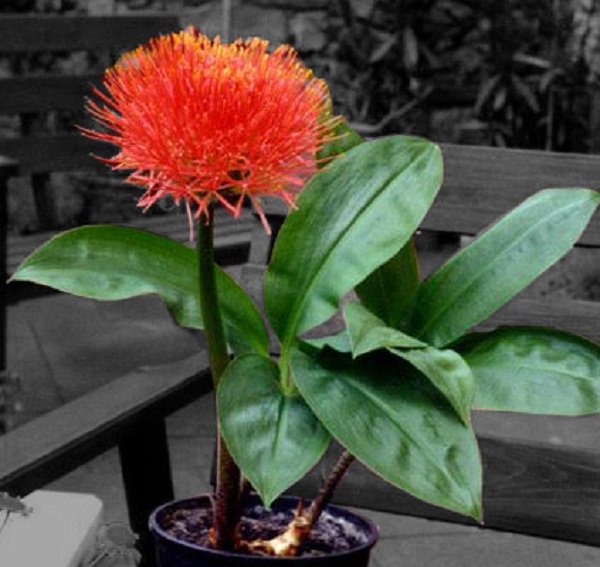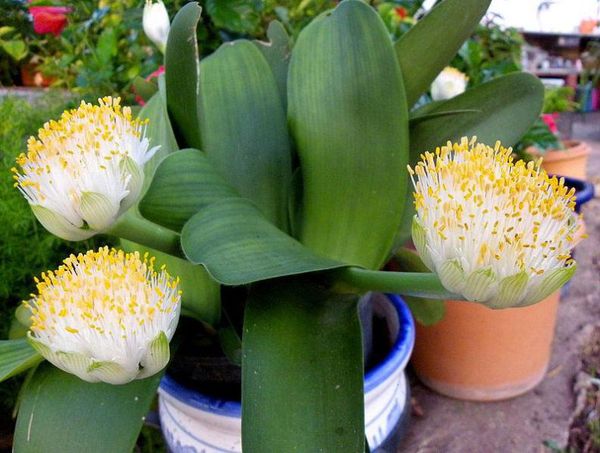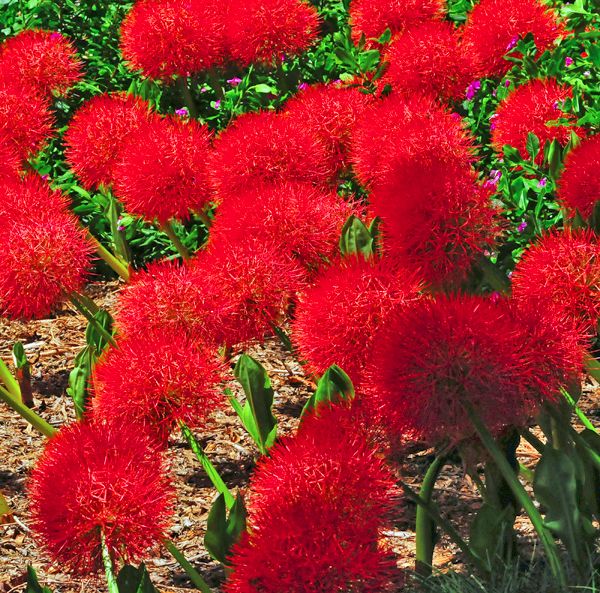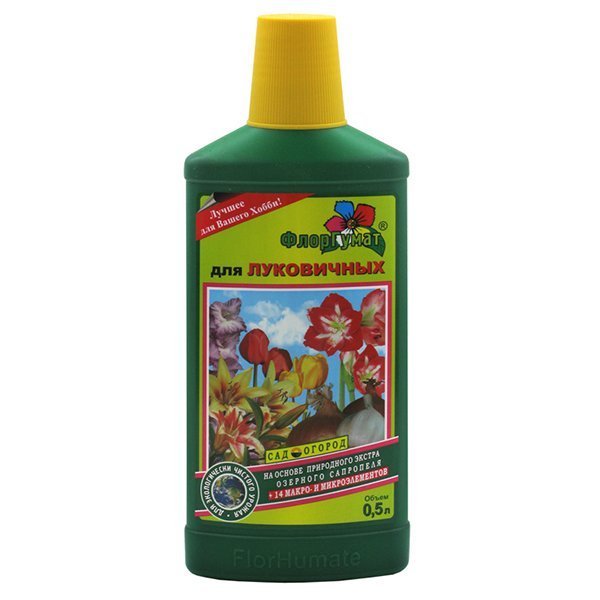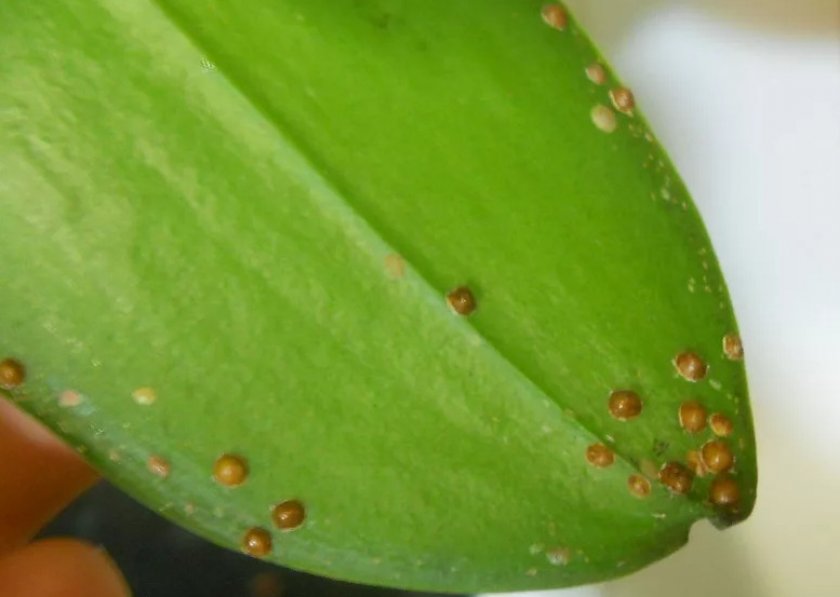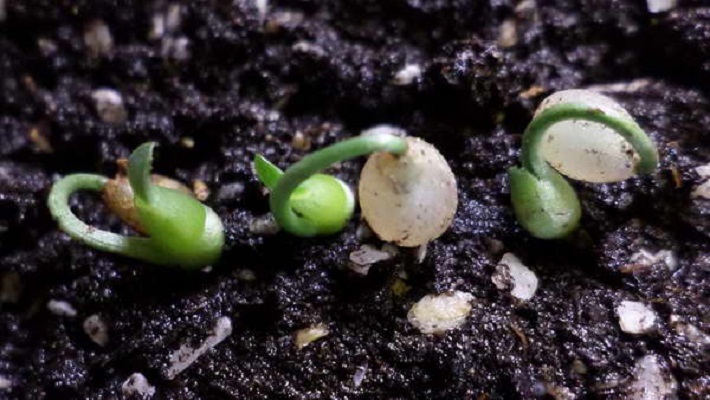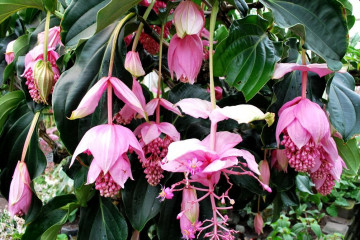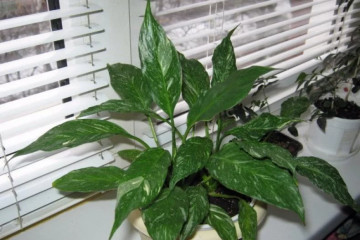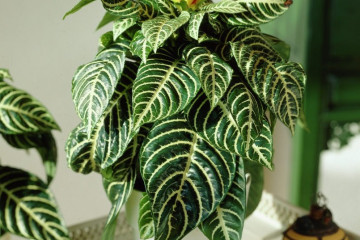Hemantus flower - home care
Content:
Information about the hemantus flower first appeared in 1753. Its description was made by the outstanding Swedish scientist, naturalist Karl Linnaeus. Why did the hemantus flower get this name? It turns out that the Greek words "haemo" and "anthos" translate as "bloody flower."
In nature, there are different colors of hemantus, but the main one is recognized as the typical red color. In 1984 he was separated into a separate genus of the Amaryllis family.
Varieties of hemantus
Currently, 22 species of hemantus are known. Their homeland is tropical Africa and Namibia. This bulbous plant is similar in appearance to the amaryllis.
Hemantus flowers have a specific smell. In home breeding, the following types are most common:
- White-flowered - the most common among indoor flowers. It has wide, tongue-shaped leaves that resemble the tongue of a deer. It has short but powerful peduncles with white flowers. Leaves are dark green in color.
- Linden - most often found in garden plots. The flower grows in the ground, has leaves arranged in two rows on long petioles. The half-meter peduncle distinguishes Lindena from other varieties of hemantus.
- Multi-flowered - it is distinguished by the presence of a long peduncle and large leaves. During the season, the number of inflorescences reaches from 50 to 90.
- Catarina - has long thin leaves located on a false stem. In the presence of red inflorescences. Blooms in late summer for four weeks. After flowering, bright red berry-shaped fruits are tied. Florists speak of Katarina's hemantus as the most popular in home floriculture among a similar type of flowers.
- Pure white - very similar to white-flowered hemantus. The difference lies in the edging on the peduncle and the back of the leaves.
- Sharlakhovy - has one and a half meter leaves with ends painted in red. The peduncle is spotted. Flowering time is autumn.
- Pomegranate - is a type of hemantus with beautiful inflorescences up to 10 cm long. The leaves have a leathery appearance with a characteristic bright red color and wavy edges. It blooms actively from July to January.
- Tiger Haemanthus tigrinus is a spectacular large-leaved plant. The length of its leaves reaches 45 cm, they are green. There are brown spots on the bases of the leaves.
Hemantus care
Gemantus is rarely found in home breeding. Proper care of the hemantus at home will allow you to get both the expected flowering and the development of the flower.
Soil and pot selection
In flower shops, Gemantus, like all flowers, is sold in a portable pot. After home acclimatization, it is transplanted into a stationary pot. The pot is chosen high, since the bulb has long roots, which must be carefully laid out in the pot when transplanting.
The distance from it to the side walls of the pot should not exceed 3 cm. The bulb should not be buried in the soil. You can transplant the plant twice a year, if it gives a small increase, annually and once every 2-3 years. This is at the discretion of the florists.
You should pay the attention of novice florists to the soil. The bottom of the pot should be covered with drainage so that water does not stagnate and the roots do not rot. The soil is sold at a flower shop. For Hemantus, a light soil is needed. It is a universal substrate or special soil for ornamental plants with the addition of charcoal, coconut soil and humus.
Watering and feeding
Bulbous plants do not like stagnant water in the soil. Hemantus does not react well to excess moisture. Home care for him consists in moderate watering. Experienced flower growers note that this indoor flower tolerates drought more easily.
The soil is fertilized in spring and summer every three weeks. A weak solution of mineral fertilizer is poured into a tray, where a pot with a flower is placed for 20 minutes. Through osmosis, the plant will receive all the nutrition it needs.
Temperature and lighting
The plant likes bright, but not direct light. The flower feels best on the windowsills of windows facing east and west. The flower pot must be rotated to allow for uniform development of the leaves.
Being a thermophilic plant, the hemantus does not like temperature fluctuations, especially in the colder side. If purchased from a store in winter, arrange for warm delivery to your home. The optimum temperature at which the flower grows and blooms is from + 18 ° to + 22 ° C.
During winter dormancy, which lasts from December to April, the hemantus is kept in a cool place. It is desirable that the temperature is not higher than + 15 ° C. An insulated balcony or loggia in an apartment or a veranda in a house is suitable for this. Gemantus does not like stagnant air, any room needs to be ventilated.
Growing problems
Gemantus is an unpretentious plant. It blooms annually when grown correctly. However, growers face some problems when the buds begin to turn black, the leaves dry, and flowering stops. What is the reason for this?
Slow development
You need to pay attention to the soil in the plant pot. Perhaps she needs fertilization. The presence of pests and disease can interfere with the development of the plant. Inspect the flower and take the necessary pest or disease control measures.
Blackened buds
The reason for the blackening of the buds should be attributed to high humidity and a violation of the temperature regime. In this case, the flower pot is placed in a room where there is no moisture, you should also dry the soil and start moderate watering.
Why do Hemantus leaves turn yellow
There may be several reasons. This is an excess of moisture in the soil or drying out. The bulb of the plant may begin to rot from the overflow. Soil pests can also lead to yellowing of the leaves. What, in this case, are advised to do by experienced flower growers who have also observed this in their home plants?
Flower care mistakes
As a result of a number of mistakes in caring for the plant, it may stop blooming, white dots or lightening can be found on the leaves, elongated leaves appear. Florists recommend not to forget that the hemantus blooms after a dormant period. To provide it, you need to stop watering the flower in October. As a result, the leaves begin to turn yellow and dry out.
The flower goes into a state of rest. The flower pot for this time should be placed in a dimly lit room with an air temperature of 14-16 ° C. Light soil moisture is acceptable at this time. You can start watering the hemantus in early spring.Hemantus will bloom at the end of May.
There may be other reasons that delay the flowering of the hemantus. For example, a pot is too spacious for a flower, in which the plant must master the land, and only then begin to bloom. The bulb may be too deeply planted, or the flower is poorly lit. In this case, you need to eliminate these reasons.
If the leaves of a flower have lightened and began to stretch out, this means that it is poorly lit. It needs to be moved to a brighter place. White dots can be found on the leaves. The nature of their appearance is different: the consequences of spraying and getting burns from direct sunlight. It is necessary to eliminate these causes.
Pests and diseases
Florists pay attention to the fact that hemantus is susceptible to diseases and pests. The danger for him is the scale insect and the red spider mite. They breed well in hot, unventilated areas.
Shield
Hiding under the leaves of a plant, scale insects cause irreparable harm to them. They suck out the juice. The methods of dealing with them include sprinkling of hemantus with Karbofos, "Decis" and "Aktellik".
Red spider mite
Spider mites are the worst pests. The leaves of the plant entangled in cobwebs dry out. The salvation from the tick is insecticides that are used to treat the plant.
Gray rot
Disease with gray mold is indicated by spots on the leaves and white bloom. In this case, the hemantus is treated with a weak fungicide. If the plant is severely affected, it is destroyed.
Staganospore
Gemantus is susceptible to a disease such as staganospore. Its sign is red spots on the bulbs and leaves. At the initial stage of the disease, "Fundazol" is used.
Anthracnose
The appearance of dark spots on the leaves, at their ends - the same color of streaks, indicates a plant disease with anthracnose. It is necessary to remove the affected leaves, treat the flower with a solution of "Fundazol".
Growing Hemantus from seeds
There is no special secret in the reproduction of hemantus. You can grow a flower from daughter bulbs, by cutting a leaf or from freshly harvested seeds.
A flower is grown from seeds like a regular seedling. Florists note that the hemantus grown in this way enters the flowering time only after five years. This is the only disadvantage of growing from seed that breeders do not pay attention to.
When breeding hemantus at home, you need to take care of it, guided by the advice of experienced florists. Caring for the plant is simple, in favorable conditions any type of hemantus will delight flower growers with its flowering.
